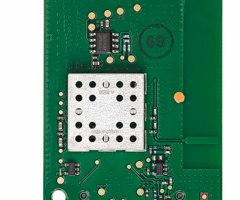Are Special Firewall Settings Needed for LTEM-P and PRO Comms?
Although most networks will not require any changes, advanced networks may need special permissions for the PRO and LTEM-P communicators. Access to specific URL and port combinations will need to be enabled for specified endpoints. Port 443 is the traditional SSL port, and 53 is used for DNS.
The ProSeries panels are All-In-One units with a 7" touchscreen. The Honeywell Home PROA7 and Resideo PROA7C are basically the same panels, and the Honeywell Home PROA7PLUS and Resideo PROA7PLUSC are the same. The only difference between the Honeywell Home and Resideo version is the branding on the front of the panel.
The PROA7PLUS and PROA7PLUSC both come with the Honeywell Home PROWIFIZW Module installed from the factory. They can also have an AT&T or Verizon cellular module added. The Honeywell Home PROA7 and the Resideo PROA7C do not come with a built-in communicator and will need a Honeywell Home PROWIFI or PROWIFIZW purchased and installed separately if IP communication and/or Z-Wave support are desired. They can also support either an AT&T or Verizon cellular module. In both cases, the cellular module is sold separately unless purchased in a kit.
The LTEM-PA, LTEM-PIA, LTEM-PV, and LTEM-PIV are all dual-path communicators. They come with built-in cell modules, either AT&T or Verizon. They also have an onboard Ethernet connection for internet communication. The LTEM-PA and LTEM-PV can use WIFI instead of ethernet by installing the PROWIFI or the PROWIFIZW. The LTEM-PIA and LTEM-PIV were made to satisfy the UL-985 listing requirements for household fire devices. As a result, they do not support the PROWIFI or PROWIFIZW modules when adhering to the UL restrictions.
The PRO and LTEM-P series communicators can send data to AlarmNet through the cellular and/or internet path. When both cellular and internet are used, the IP or internet path is always primary. This internet path can connect through either an Ethernet connection or through your local WIFI network. For the communicators that support both Ethernet and WIFI, only one of these IP paths can be used, not both. The connection method for your device will depend on which communicator you have, and which modules are installed.
These communicators will work with most internal networks "as is", with no additional setup or configuration needed. On occasion, you may run into an advanced, high-security network where the network administrator has things configured in a way that impedes signals from being passed successfully. On these rare occasions, you are required to enable access to the needed servers. For this reason, Resideo has provided a firewall setting help guide. The AlarmNet Web Address and Port Info for PROSERIES products document details all URL and Port combinations that must be able to connect through the firewall.
AlarmNet Web Address and Port Info for PRO and LTEM-P Series IP Communicators
The firewall policies must allow outbound access to the endpoints defined below for devices communicating via IP:
| Endpoint | Port | URL |
|---|---|---|
| GDR | 443 Outbound | https://prov.prod.granite.clouddevice.io:443 |
| DNS | 53 Outbound | Primary: 198.140.155.80 Secondary: 198.140.154.80 |
| DFC | 443 Outbound | devicehub-00-titan-dfc-prod-na.alarmnet.com devicehub-00-titan-dfc-prod-na.alarmnet.com |
| CRITICAL API | 443 Outbound | anc-na-ny80-prod-criticalapi.alarmnet.com
anc-na-sg90-prod-criticalapi.alarmnet.com |
| ALARMNET 360 | 443 Outbound | vcs.alarmnet.com vcs2.alarmnet.com |
| DATA SERVER (TC/CAL & COMPASS PC) | 443 Outbound | dataserver1.alarmnet.com
dataserver2.alarmnet.com |
| FIRMWARE DOWNLOAD | 443 Outbound | https://fwota-grip-na-prod-cdn-endpoint.azureedge.... |
Did you find this answer useful?
We offer alarm monitoring as low as $10 / month
Click Here to Learn MoreRelated Products


- Answered
- Answered By
- Freddie Daniels


